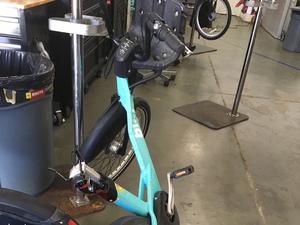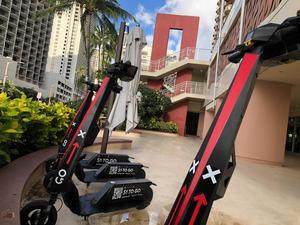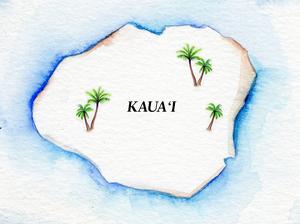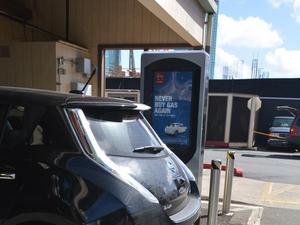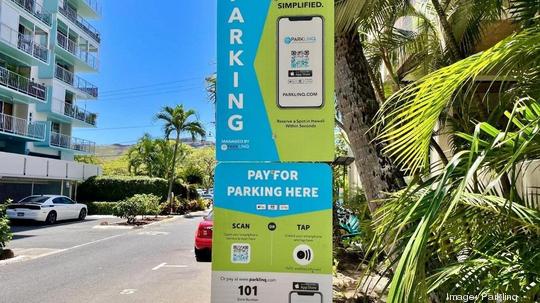
One day a few years back, Tyler Saenz's normal Fort DeRussy parking stall in Waikiki was unavailable and he got tired of circling around for a spot. He decided to take a gamble, parking in someone's driveway with the hope that he could work out an arrangement later.
He did.
"It got me thinking, gosh I wonder how many people have an open spot in Waikiki that they aren't using or they have an extra spot when they only have one car," Saenz, the founder and CEO of Parklinq, told Pacific Business News on Wednesday.
With that, a new local business concept was born: the digital parking broker.
Parklinq, an app that connects people hunting for parking with stall owners — for now, mainly in Urban Honolulu — went live last October and has seen its customers and stall hosts alike steadily climb.
Saenz told PBN that Parklinq has seen growth of 60% month-over-month since it began. Currently, it has a few hundred parking stalls in its database from businesses, hotels, churches, and private street owners in about 20 different locations in Waikiki and the surrounding area. Customers can pay hourly, daily or monthly.
He said when he did his research, he found there were typically more unused parking spots in Waikiki than were used — yet people would circle around looking for parking for an average of 20 minutes, causing about 35% of the traffic congestion in the area.
"Why is someone not connecting these two? It's the most expensive daily parking in the United States, more than Manhattan, more than San Francisco," said Saenz, who noted Waikiki parking can come out to $50 a day.
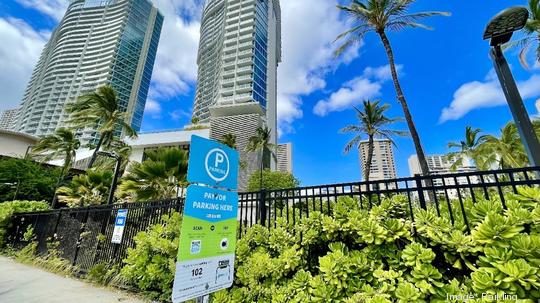
Initially, Saenz, who has a hospitality background, had to try to hunt down decision-makers himself among various business entities when he first began setting up Parklinq in 2018. Now, with word of the app spreading, they are beginning to approach him and his team of 11.
He said between the buildout of Parklinq's website and app, getting the legal component square and other setup, it amounted to an up-front investment of about $225,000. He believes no one else is doing it in Hawaii, though major cities like New York and London have some version of parking brokering.
After some early iterations and customer feedback, Parklinq has settled on its current business model of a 70-30 profit split for each customer use, with 70% for the stall owner and 30% for the app.
"If the spot owner's going to make more money, we're going to make more money," Saenz said.
He gave an example of a Parklinq customer who put their own Waikiki condo parking stall up for availability and generated about $300 in the first month, defraying a significant amount of their rent. An Urban Honolulu renter can spend to 37% of their rent on parking, according to a 2020 study by the Ulupono Initiative.
At first, Parklinq customers had to make an account on the app and reserve stalls remotely. But as Saenz observed customer behavior, he decided he needed to make the process even easier — so Parklinq rolled out signs with QR codes and NFC (near field communication) tap capability at stall locations, and a guest checkout option so people could enter their license plate and credit card as they walked away from a stall that they found organically. The goal was to make the process take 30 seconds or fewer.
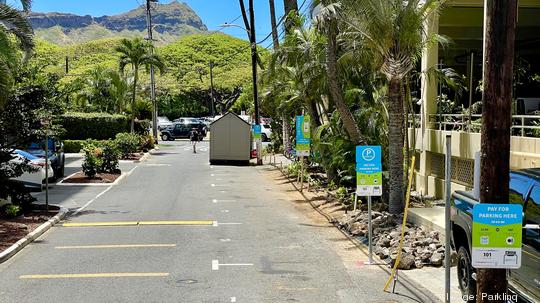
The signs inadvertently doubled as the best form of advertising, better than Google or Facebook ads, he said.
"New in this business, I would've never thought to do that," Saenz said. "I would think you'd want as many people to sign up, get as many users as possible, get their information ... but I'm not in the business of email addresses. I'm in the business of parking."
The current split of transactions is about 75% QR or NFC "transient" transactions, and 25% reservations ahead of time via the app, he said. In a given day, Parklinq does about 150 transient transactions, Saenz said.
Stall rates are set by the stall owners, although Parklinq provides recommendations based on location and time of day. Mid-day Wednesday, hourly rates for spots around Urban Honolulu ranged from $1 to $4.
Parklinq touted the environmental benefits of their service as customers spend fewer minutes on the road in search of parking. The company sets aside 1% of its revenue for renewable energy purchases.
An expansion to the Neighbor Islands might happen in the near future.
"Our next target is Maui [where] we should be on very soon," Saenz said.
A person Tyler Saenz mentioned as making $450 in Waikiki during their first month with Parklinq was a regular customer, not a Parklinq team member, and they made about $300 in real profit.
